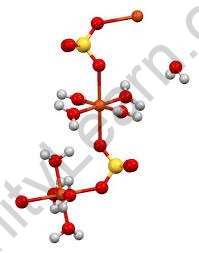
Courses

By Shailendra Singh
|
Updated on 30 Dec 2024, 11:57 IST
Sulphate (SO42-) is one of the most common chemical compounds found as naturally occurring minerals on Earth. It is typically present in the environment due to atmospheric and terrestrial activities. Sulphur emitted from evaporite deposits, sulphide-containing rocks and minerals, and even volcanoes is an important source of sulphate.
The sulphate ion is mostly made up of sulphur and oxygen atoms. Sulphur is the central element in this structure, surrounded by four oxygen atoms spaced evenly across the plane. In terms of bonding, two oxygen atoms make S=O bonds, while the other two form S-O- bonds. Because the oxygen atoms are in a -2 state, they are responsible for the anion’s negative charge (-2).
When we look at the structure or form of the molecule, we can see that it has a tetrahedral geometry, which is further supported by the VSEPR hypothesis. In layman’s words, the geometry of sulphate ion is star-shaped.

Sulfates are typically prepared in one of two ways.
Ba(ClO3)2 + H2SO4 → 2 HClO3 + BaSO4
Zn + H2SO4 → ZnSO4 + H2
Cu(OH)2 + H2SO4 → CuSO4 + 2 H2O

One thing to remember while making sulphate is that sulfuric acid should be deprotonated twice. If it happens only once, the ion hydrogen sulphate is formed. Sulfates are abundant in nature and are also easily manufactured in industry. As a result, this chemical compound has a wide range of uses.

Because of its direct and indirect applications in the synthesis of various chemicals, including fertilisers, sulphuric acid is known as the “king of acids.” To remove rust from steel rollers and soap, sulphuric acid is employed. It also dissolves the chemicals it contains. As a result, it is appropriate to refer to sulphuric acid as the “King of Chemicals.”
The wet sulphuric acid method can be used to produce sulfuric acid from sulphur combustion or to regenerate wasted acid from alkylation units.